As 2010 marks “The Year of the Tiger” in many Asian cultures, there has been global interest in the long-term viability of tiger populations in the wilds of Asia. Due to increasing pressures on remaining tiger habitats and a surge in demand for tiger parts from traditional medicine trades, many conservation experts consider the current outlook for wild tiger populations bleak. Dr Ullas Karanth of the Wildlife Conservation Society (WCS) India does not share this view. He believes that a collaboration of global and local interests can secure a future for tigers in the wild.
The following is a field update from Dr Karanth.
AN INTERVIEW WITH ULLAS KARANTH
Mongabay: Dr Karanth, what is your outlook in regard to global tiger conservation in 2010, “The Year of the Tiger?”
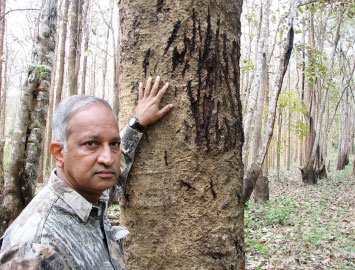 Dr Karanth in “Tiger Country” with evidence of Local Tigers Photo courtesy of WCS India and Dr Ullas Karanth. |
Dr Ullas Karanth: That is a rather sweeping question! Some folks had predicted an increased pressure from the “parts trade” due to cultural reasons related to “The Year of the Tiger.” I am not sure if that prediction is being borne out (a strong and ironic upswing in tiger poaching for the parts trade). However, given that many Asian countries are experiencing continued economic growth, both positives and negative impacts of such growth on wild tigers are bound to increase.
I am reasonably sure that in the Karnataka State of South West India where we work with a number of local partner NGOs, the prospect for wild tigers is quite positive: tiger densities are high and holding steady in Nagarahole and Bandipur reserves and increasing in the Bhadra reserve. It all depends on sustaining our positive momentum, but I am not in total despair like many other tiger conservationists appear to be on the issue of long-term viability of wild tigers.
Mongabay: Could you tell our readers briefly about WCS’s current work with the Bengal tiger in the wilds of India?
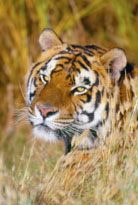 Indian tiger. Photo courtesy of WCS India and Dr Ullas Karanth. |
Dr Ullas Karanth: WCS has worked since 1988 with Indian tigers (I prefer that name to the archaic “Bengal tiger”). This started in the Nagarahole reserve and we have expanded the scope of this project to a 25,000 square kilometer area known as the Malenad-Mysore Tiger Landscape (MMTL) that encompasses and connects several adjacent tiger reserves. WCS staff works closely with local partners, both NGOs and government groups, to develop this program. At the core of this work is the research and monitoring program encompassing this conservation area, implemented by partners like the Centre for Wildlife Studies and National Centre for Biological Sciences. The results of this research and monitoring are then turned into “policy prescriptions” or direct conservation action by working closely with other partners including the National Tiger Conservation Authority. This collaborative work focuses on enhanced protection for tigers, their prey and environment, through habitat consolidation and de-fragmentation of tiger areas through the active promotion of voluntary, incentive-driven relocation of human settlements out of core tiger habitats harboring “source” or core tiger populations. It is public outreach and local education, however, which are the key elements in all of this work. There is room in India (and the rest of Asia) for people and wild tigers. We are working with local peoples to foster the understanding that healthy forests (ecosystems) populated with wild animals, including tigers, sustains the health of the broader environment, including the areas of human habitation. The effectiveness of this public outreach and the sustained management of “source habitats” and the real time monitoring of tiger numbers and their prey species in these management areas is what ultimately tells us whether we are succeeding or failing in our efforts. This approach seems to be working.
Mongabay: “Project Tiger,” the Indian Government’s national tiger conservation project, is close to the 40-year anniversary of the program’s inception in 1972. The project has had limited success. How do you feel about the prospects of the Indian Government’s new focus on the project? Is the Indian Government taking the right steps?
Dr Ullas Karanth: I feel good that the national government and some state governments are indeed showing increased commitment in terms of providing funds for tiger conservation. However, the actions they implement are not always guided by best practices in either tiger science or conservation. Sometimes too much money spent unwisely can become a big problem. Partnering with “on the ground NGOs” and working with the local communities is key to the viability of these projects.
Mongabay: What steps do you feel will need to be taken on a global basis to ensure that wild tiger populations are sustained by 2022 the next “Year of the Tiger.” Please also discuss your thoughts on upcoming projects like the “Global Tiger Summit” in St Petersburg, Russia.
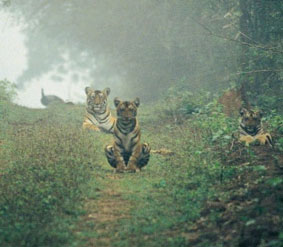 Top Predators Like Tigers are a Vital Part of a Healthy Forest Ecosystem and Environment Photo Courtesy of WCS India and Dr Ullas Karanth. |
Dr Ullas Karanth: WCS scientists and several other conservation groups recently emphasized a prescription or blueprint for the recovery of wild tiger populations. We know 70% of the remaining source tiger populations that offer some hope of recovery are now concentrated on just 6% of remaining tiger habitat. And these critical core habitats are where we have to prevent killing of tigers and prey, rather than wring our hands in despair after tigers are poached. If focus is brought back to on-ground protection, habitat consolidation and intensive real-time monitoring for these source, core tiger populations, tigers can rebound, reach saturation densities, and then repopulate wider landscapes (a fact we have documented in Karnataka, India). On the other hand, if conservationists get distracted by an array of omnibus approaches that take on every problem identified (and imaginable), and act in a dissipated manner, we will continue to lose the remaining tiger source populations. There is now broad global interest in saving wild tigers and most of these various groups and interests mean well. But I do not find much evidence of the clear, focused thinking that is needed in upcoming projects like the “Global Tiger Summit in Russia,” so I do not have great hopes from what I have seen so far these types of efforts. But it is good that these types of projects are fostering an opportunity for dialog and collaboration. Tiger conservation communities and interests need to use these opportunities to “get on the same page” and develop practical, field tested strategies if this global goodwill is going to have any long-term merit.
It is all about learning from past mistakes and adopting best practices. In the final analysis, the only reliable metric of success (or failure) should be recovery of tiger numbers, not money spent, goodwill generated (etc.), which are really just tools in a conservationist’s kit.
To learn more about Dr Karanth and the work of the WCS India visit www.wcsindia.org, www.cwsindia.org, and www.truthabouttigers.org. And for Mongabay readers and conservation enthusiasts in the San Francisco Bay Area this upcoming weekend, Dr Karanth will be a featured speaker at the Wildlife Conservation Network’s Annual Wildlife Conservation Expo Day, Sunday, October 3rd, from 10AM to 6 PM at the San Francisco Mission Bay Conference Center. It is a chance for conservation and wildlife enthusiasts to learn first hand from some of the top leaders in the field of global conservation.
Citation: Walston J, Robinson JG, Bennett EL, Breitenmoser U, da Fonseca GAB, et al. (2010) Bringing the Tiger Back from the Brink—The Six Percent Solution. PLoS Biol 8(9): e1000485. doi:10.1371/journal.pbio.1000485
Early articles about WCN participants and partners
Fighting poachers, going undercover, saving wildlife: all in a day’s work for Arief Rubianto

(09/29/2010) Arief Rubianto, the head of an anti-poaching squad on the Indonesian island of Sumatra best describes his daily life in this way: “like mission impossible”. Don’t believe me? Rubianto has fought with illegal loggers, exchanged gunfire with poachers, survived four days without food in the jungle, and even gone undercover—posing as a buyer of illegal wildlife products—to infiltrate a poaching operation. While many conservationists work from offices—sometimes thousands of miles away from the area they are striving to protect—Rubianto works on the ground (in the jungle, in flood rains, on rock faces, on unpredictable seas, and at all hours of the day), often risking his own life to save the incredibly unique and highly imperiled wildlife of Sumatra.
Into the Congo: saving bonobos means aiding left-behind communities, an interview with Gay Reinartz
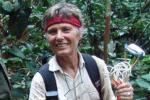
(09/23/2010) Unlike every other of the world’s great apes—the gorilla, chimpanzee, and orangutan—saving the bonobo means focusing conservation efforts on a single nation, the Democratic Republic of the Congo. While such a fact would seem to simplify conservation, according to the director of the Bonobo and Congo Biodiversity Initiative (BCBI), Gay Reinartz, it in fact complicates it: after decades of one of world’s brutal civil wars, the DRC remains among the world’s most left-behind nations. Widespread poverty, violence, politically instability, corruption, and lack of basic infrastructure have left the Congolese people in desperate straits.
On the Road with Dr. Laurie Marker: Reflections on Conservation in the Media Age

(07/26/2010) Earlier this year, mongabay.com had the opportunity to interview world-renown conservationist Dr. Laurie Marker, Executive Director and Founder of the Namibia-based Cheetah Conservation Fund (CCF). Dr. Marker had just received the prestigious Tyler Prize for Environmental Achievement from the University of Southern California and was traveling throughout the US on one of her many international public relations tours.

(04/12/2010) 2010 marks a monumental milestone for the Jane Goodall Institute (JGI) and its founder, Dr. Jane Goodall, DBE. Fifty years ago, Goodall, who is today a world-renowned global conservation leader, first set foot on the shores of Lake Tanganyika, in what is now Tanzania’s Gombe National Park. The chimpanzee behavioral research she pioneered at Gombe has produced a wealth of scientific discovery, and her vision has expanded into a global mission ‘to empower people to make a difference for all living things.’ Time, however, has not stood still for Gombe. The wild chimps of the area have suffered as the local human population has swelled. Gombe National Park is now a forest fragment, a 35-square-kilometer island of habitat isolated in a sea of subsistence farming. Because the problems facing Gombe—unsustainable land practices, overpopulation, and a cycle of poverty—are typical of many other areas, lessons learned by Dr. Goodall and her team provide valuable insights for solutions at Gombe and beyond.
The Critically Endangered South China Tiger Roars Again in 2010, the Chinese Year of the Tiger

(02/14/2010) Today marks the Chinese New Year for 2010, and the start of the traditional Year of the Tiger. The people of China might be celebrating future Years of the Tigers without their native and critically endangered South China Tiger (Panthera tigris amoyensis) if not for the efforts of Save China’s Tigers (SCT) a grassroots conservation effort headed by the charismatic Li Quan and her husband Stuart Bray. Both Ms Quan and Mr. Bray are former senior executives in international business circles. After leaving the corporate world, Ms Quan and Mr. Bray are now stepping up as champions for China’s natural environment, much of which has been lost in the Chinese march towards “The Four Modernizations.”
Saving the world’s rarest wolf

(11/09/2009) Living on the roof of Africa, the Ethiopian wolf is one of the world’s rarest carnivores, if not the rarest! Trapped on a few mountain islands rising over 4,000 meters above sea level on either/both sides of the Great Rift Valley, this unique canid has so far survived millennia of human-animal interactions in one of Africa’s most densely populated rural lands. But the threat of climate change and a shifting agriculture frontier may require new conservation measures, according to Argentine-born Claudio Sillero, the world’s foremost expert on the Ethiopian wolf, who has spent two decades championing this rare species.
Employing dogs to save endangered species and places, an interview with Megan Parker

(09/21/2009) For millennia dogs have been helpers to humans: they have herded and protected livestock, pulled sleds, hunted game, led the blind, located people after disasters, and sniffed out drugs. Now a new occupation can be added: conservation aide. Working Dogs for Conservation (WDC) was begun by Megan Parker in 2000: the idea, to use dogs’ impeccable scent capabilities for conservation initiatives, appears so logical and useful when Parker talks about it, one is surprised it took environmentalists so long to realize the potential of dogs.
After declining 95% in 15 years, Saiga antelope begins to rebound with help from conservationists
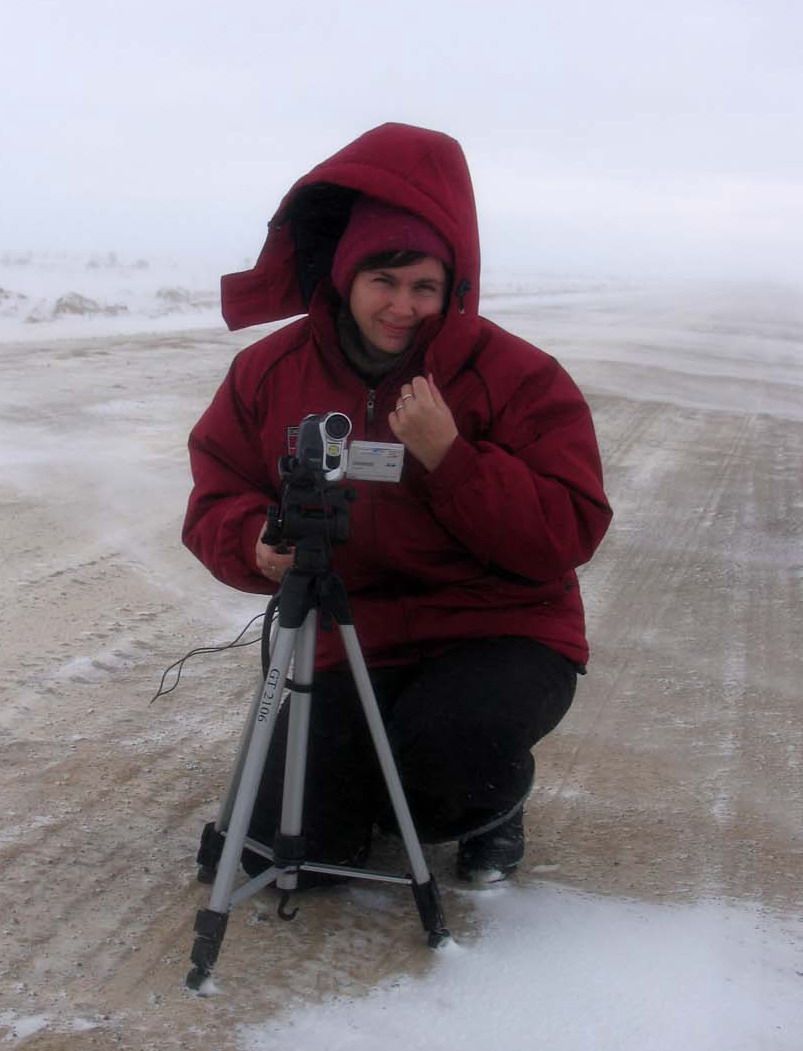
(09/20/2009) In a decline on par with that suffered by the American bison in the Nineteenth Century, in the 1990s the saiga antelope of the Central Asian steppe plummeted from over one million individuals to 50,000, dropping a staggering 95 percent in a decade and a half. Since then new legislation and conservation measure have helped the species stabilize in some areas but in others the decline continues. Working for six years with the Saiga Conservation Alliance, Founding Member and Executive Secretary Elena Bykova has helped bring the species back from the very brink of extinction.
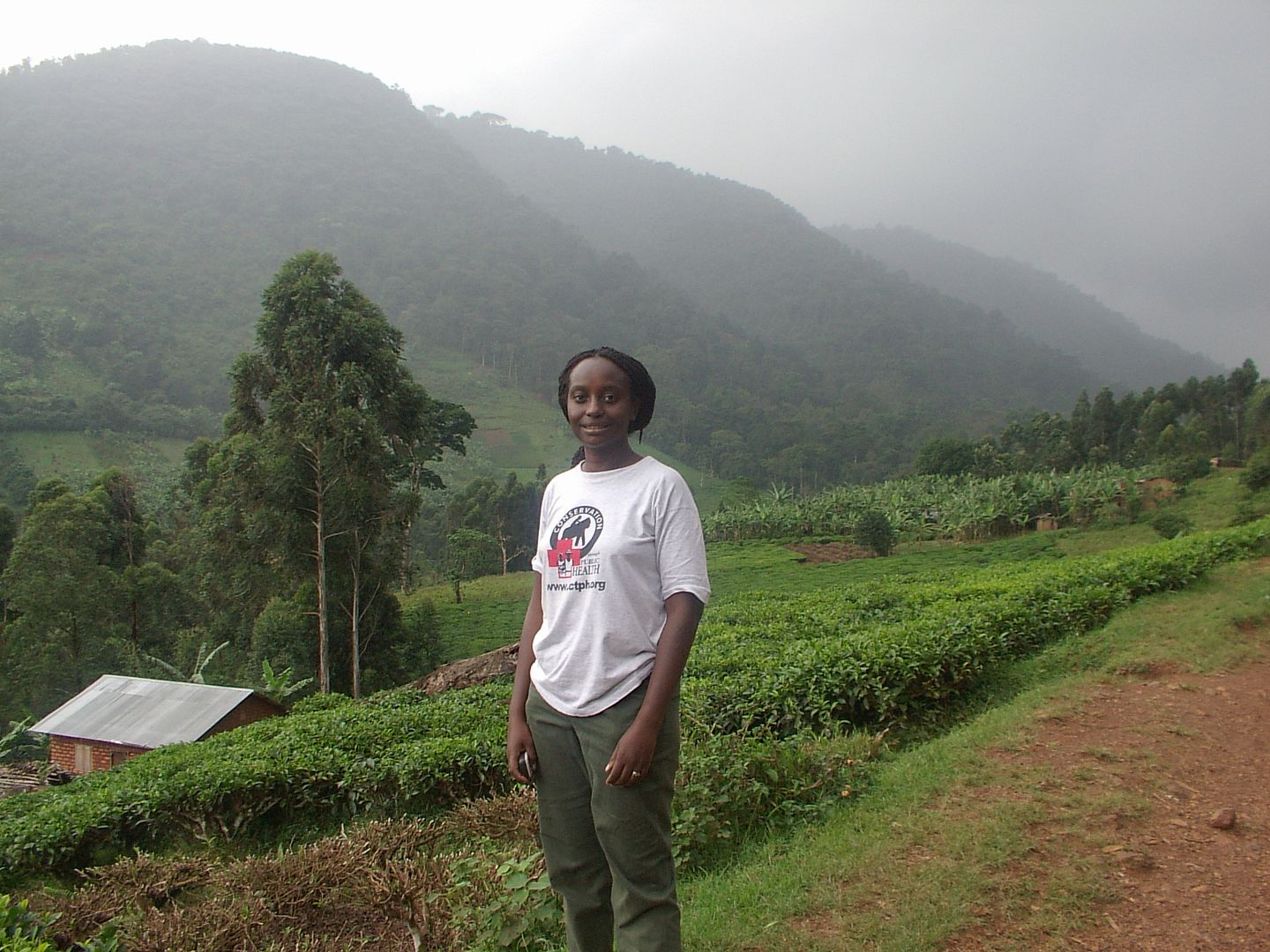
(09/16/2009) How can bringing healthcare to local villagers in Uganda help save the Critically Endangered mountain gorilla? The answer lies in our genetics, says Dr. Gladys Kalema-Zikusoka, wildlife veterinarian and director of Conservation through Public Health (CTPH). “Because we share 98.4% genetic material with gorillas we can easily transmit diseases to each other.” Therefore, explains Kalema-Zikusoka “our efforts to protect the gorillas will always be undermined by the poor public health of the people who they share a habitat with. In order to effectively improve the health of the gorillas we needed to also improve the health of the people, which will not only directly reduced the health threat to gorillas through improvement of public health practices, but also improved community attitudes toward wildlife conservation.”
Community engagement is key to saving the rarest zebra

(09/14/2009) Efforts to protect the world’s largest and rarest species of zebra — Grévy’s Zebra (Equus grevyi) — hinge on engaging communities to lead conservation in their region, says a Kenyan conservationist. Belinda Low, Executive Director of the Nairobi-based Grevy’s Zebra Trust, says her group’s programs, which employ members of local communities as scouts and conservation workers, are helping maintain dialog between communities while providing new opportunities for education and employment. Grevy’s Zebra Trust is working with communities to plan livestock grazing so that it can be used as a tool to replenish the land, rather than degrade it
Saving Africa’s ‘unicorn’, the okapi

(09/02/2009) The giraffe is one of Africa’s most recognizable animals, but its shy and elusive forest cousin, the okapi, was so little known that until just over a century ago the western world believed it was a mythical beast, an African unicorn. Today, a shroud of mystery still envelops the okapi, an animal that looks like a cross between a zebra, a donkey, and a giraffe. But what is known is cause for concern. Its habitat, long protected by its remoteness, was the site of horrific civil strife, with disease, famine, and conflict claiming untold numbers of Congolese over the past decade. Now, as a semblance of peace has settled over Democratic Republic of Congo (DRC), the okapi’s prospects have further dimmed, for its home is increasingly seen as a rich source of timber, minerals, and meat to help the war-torn country rebuild. In an effort to ensure that the okapi does not become a victim of economic recovery, the Okapi Conservation Project (OCP) is working to protect the okapi and its habitat. Founded by John Lukas in 1987, well before the conflict, OCP today manages the Okapi Wildlife Reserve, a 13,700-square-kilometer tract of wilderness in the Ituri Forest of northeastern DRC.

(08/25/2009) Electricity can be a difficult commodity to procure in the remote areas where conservationists often work. Typically field researchers and wildlife rangers rely on gas-powered generators, which require imported fuel, often produce noxious fumes and disruptive noise, and can be costly to maintain. A better option, especially in sun-drenched parts of the world, is solar. Clean and silent, with no need for supplemental fuel, solar seems like an ideal fit for conservation work except for one major drawback: cost. But Stephen Gold – Solar and Technology Manager for Wildlife Conservation Network has been working to overcome that obstacle.
World’s rarest camel survived nuclear tests but today threatened by hunger for its meat

(08/24/2009) Camels are among the most recognizable animals on the planet, yet few realize that wild populations are at a high risk of extinction. Of the world’s two camel species, the Dromedary camel, characterized by a single hump, has already gone extinct in the wild. The second species, the two-humped Bactrian camel, was on a similar trajectory until very recently, but still less than 1,000 of the world’s 1.4 million Bactrians are wild. The abundance of domesticated Bactrian camels relative to wild camels doesn’t address the question of whether it matters if another species of camels goes extinct. John Hare, founder and director of the Wild Camel Protection Foundation, argues that it does. Hare says the world will be a poorer place if wild Bactrian camels are allowed to follow their cousins into the sunset.
World’s rarest tree kangaroo gets help from those who once hunted it
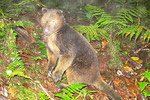
(08/17/2009) The world’s rarest tree kangaroo is in the midst of a comeback in a remote part of Papua New Guinea. On the brink of extinction in 2001 with a population estimated at fewer than 100 individuals, Scott’s Tree Kangaroo (Dendrolagus scottae), or the tenkile, is recovering, thanks to the efforts of the Tenkile Conservation Alliance to motivate local communities to reduce hunting and respect critical forest habitat. The tenkile Conservation Alliance, led by Australians Jim and Jean Thomas, works to provide alternative sources of protein and raise environmental awareness among local communities.